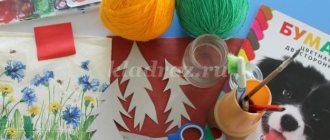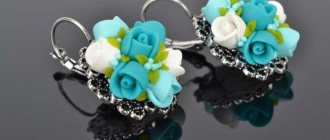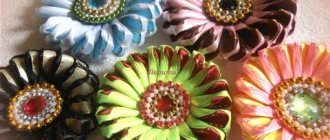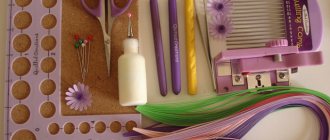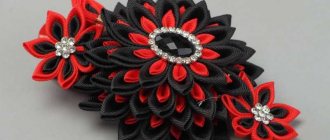Properties of epoxy resin
Craftswomen have learned to make jewelry, pendants, pendants, and decorative crafts from epoxy resin, using its unique properties:
- high strength;
- wear-resistant;
- absolute transparency;
- safe;
- has excellent waterproofing.
Do not confuse epoxy with glue of the same name. It is not intended for creativity, because in addition to resin, it contains a solvent, a plasticizing agent, and a filler. Compared to glue, resin has advantageous advantages:
- hardens quickly, and this process can be controlled and accelerated;
- the property of pure transparency is not violated throughout the entire service life of the product;
- plasticity, flexibility in processing;
- the ability to create a product of any shape;
- changing consistency using different proportions of hardener.
Craft-grade epoxy resin can be purchased at craft stores.
Features of work
The resin, which is used for creativity, due to its unique properties, has a number of features. Moreover, both the advantages and disadvantages of the material are considered nuances. We are interested in these properties in terms of the possibility of independent work. Many master classes presented on the Internet display a basic algorithm of action and do not touch on a number of details of the process. As a result, it turns out that the reader is inspired by the relative simplicity of making crafts, but in practice he is faced with a number of problems that he is not ready to solve.
The key to success is an objective assessment of your own capabilities. For each master, the scope of his activity is determined individually. It depends on the availability of tools, materials, and practical experience working with epoxy resin. Let's define a certain average statistical list, which indicates what products you can make from epoxy resin with your own hands. These products do not require special skills, that is, they are easy to create.
Advantages of the material
Let's consider those properties that make the task easier for a beginner. It is they who force us to choose epoxy resin as the main material. And the first priority should be the curing of the resin after the interaction of its components. Regardless of what shape the compound takes, you can get a fairly strong workpiece. If you have a mold for pouring (mold), the task of manufacturing the product is reduced to a minimum.
The fluidity of the resin allows you to create shapes of a wide variety of complexity. Naturally, the liquid composition will not penetrate into the capillary tubes, but, as a rule, there is no such goal. Basically, big bets are placed on turnover.
For example, when pouring a table top, it is enough to take care of the horizontal base, and the top edge formed by the resin will become smooth and horizontal without the intervention of a craftsman.
When making souvenir crafts, the determining factor for the choice of material is the transparency of the compound. While industrial brands of resins may have a characteristic yellowish tint, jewelry resins made specifically for creativity are characterized by almost perfect transparency. Thanks to this quality, entire compositions are used as decoration, including paintings and photographs.
The real field of activity for the artist is the opportunity to add paint to the compound. In this case, the resin can maintain its transparency. Thanks to color schemes, jewelry manufacturers obtain crystals that imitate ruby, amber, emerald, malachite and some other expensive natural minerals. We are not talking about counterfeiting jewelry, but with the help of tinted resin it is possible to obtain products that are in no way inferior in appearance to real jewelry.
Not the least important quality is the availability of the material. Resin can be inexpensively ordered from an online store or purchased directly from a craft store. Jewelry brands are more expensive, but they are also less expensive. For example, resin for filling countertops will cost 700-1200 rubles per 1 kg.
Useful to know > How to make a gear knob from epoxy resin with your own hands
Flaws
Now let's talk about practical problems. Many of them are simply ignored in master classes, so the first results of working with epoxy do not live up to expectations. Initially, you will have to face the problem of choosing a material; modern manufacturers present a choice of two-component compositions that come in one set, which solves only half of the problems.
Indeed, now there is no need to select a hardener for a specific brand of resin. Components from one set fit perfectly together. But the resins differ in viscosity and transparency, and without experience it is difficult to choose a suitable composition.
The curing time of the compound is limited. As practice shows, it is quite enough to fill. Experienced craftsmen can even manipulate the viscosity of the resin, allowing it to infuse after mixing the components. However, time limits have a negative psychological effect on beginners, causing haste to lead to unacceptable mistakes.
The reaction between the base composition and the hardener is accompanied by the release of heat. The higher the intensity of the reaction, the more energy is released per unit time. Brands of resins with a short lifetime are characterized by a high reaction rate, so when pouring large volumes of products, boiling of the resin is observed. These types of polymers are used to make jewelry to save time spent on curing.
Viscosity and fluidity are different concepts. Epoxy resin remains fluid even at high viscosity. The manuals state that the mold must be sealed and suggest using silicone sealant. In fact, it is not so easy to close all the cracks, and a large amount of sealant will cause unevenness to form on the surface of the resin after curing. This will complicate the subsequent sanding process. And if ready-made molds are used in the manufacture of souvenirs, then to fill the tabletop you will have to assemble the mold yourself.
The lack of molds also becomes a serious obstacle to the manifestation of creativity. The master classes show how to make silicone molds yourself, but this requires patience, diligence and, of course, artistic skills. If there is no suitable cliché at hand from which to make a cast, then the mold will not correspond to the required shape.
Continuing the review in the same vein, we should list crafts that are easy to make with your own hands, and also focus on projects that are difficult to implement. But there is a certain amount of subjectivity here. The fact is that the difficulties for one master are not the same for another, so we offer a different, more optimal approach. We will list how to make this or that product from epoxy resin with your own hands, citing difficult moments, and each reader will determine for himself the possibilities for creativity.
Basics of safe work
Although the name of the substance contains the word “resin,” it contains no natural components. If you come into contact with epoxy, there is a danger of being harmed by the fumes released. Therefore, it is necessary to observe safety precautions:
- work with gloves;
- wear a respirator to prevent inhalation of vapors;
- arrange ventilation in the room;
- limit access of household members to the place where the work process takes place, especially children and animals;
- do not be distracted while working.
In order not to spoil the surface of the table, you need to place a special board or film.
Method for preparing epoxy resin
Special kits for preparing resin are available for sale. Before you begin creative work, you need to read the instructions. Especially if this is the first experience of sculpting from this material.
Substances must be stored in a remote location, observing safety precautions.
To create a working substance you will need the following materials:
- purchased resin;
- hardener;
- disposable syringes;
- measuring containers;
- wooden stick for stirring (a toothpick will do).
Preparation procedure:
- Measure out the required amount of ingredients with a syringe;
- Mix the ingredients at a temperature of +25 degrees in one container;
- Stir the mixture thoroughly with a wooden stick so that there are no air bubbles;
- If bubbles remain, you need to heat the mixture; the bubbles will rise to the surface and will be easy to remove;
- Use the mixture to realize a creative idea.
An important point to remember is that if the mixture is prepared in plastic measuring cups, then they will not be suitable for use for other purposes. These cups should be thrown away.
Processing of products after the resin has hardened
After the substance hardens, the product acquires a cloudy, rough structure and requires finishing. Beginners sincerely believe that they did not cope with the work and the craft was not a success.
Epoxy resin has good elasticity, so the product can be easily transformed with sandpaper. During sanding, you should protect your breathing organs with a respirator, and lightly moisten the sandpaper with water. This is done to ensure that fine fractions of epoxy dust do not enter the air and harm the body.
Epoxy resin crafts
Epoxy is considered a universal material and is widely used in hand-made. It is used to create both independent products (figurines, pendants, beads) and additional elements that complement the composition.
Epoxy crafts are made using pouring molds (molds). Popular molds are silicone. They allow you to make not only beads, pendants, but even rings. Molds “release” the solution well, so the hardened product can be easily removed.
Advantages of silicone molds:
- available for purchase in any hand-made store at affordable prices;
- plastic;
- do not come into contact with the working mixture (do not stick together, do not stick together).
Dried leaves, flowers, and shells are suitable as decoration. Any three-dimensional object frozen in transparent resin will be associated with ancient amber inclusion. Whatever the decorative element is conceived, it must be carefully prepared - dry the leaves, degrease the shells with an alcohol-containing product.
Sparkles, sequins, drops of paint can also be used as a “filling” of the product, but in small proportions so as not to disturb the concentration of the resin.
What will training teach you?
A master class on working with resin will teach you how to interact with this material correctly. With its help, you can avoid typical mistakes made by almost all beginners. These lessons tell:
- How to choose a resin. What brands are best to use, what epoxy to buy, if you need to create a transparent thing, what the material should look like in a liquid state and what consistency it should have.
- How to select hardeners and dyes. There are a large number of plasticizers, pigments, and colored pastes. However, they must be combined with the purchased epoxy and give the desired shade.
- In what proportion should the substances be mixed? Vary depending on the characteristics of the resin and hardeners, purposes. Mixing rules are also important. Skillful actions will allow you to obtain a homogeneous mixture.
- How to create the desired form. Production of formwork (materials, dimensions), correct filling. Experts tell us how best to combine epoxy with wood, metal, plastic, and glass. It is important that the resin adheres firmly and does not saturate all the holes and pores, causing the other material, such as wood, to expand.
- How long to wait before first setting or complete hardening. When processing, it is important that the solution reaches the required condition. Otherwise, the workpiece may be damaged. Filling in layers is subject to separate rules. Here you don’t have to wait for the previous level to completely harden, but you need to know exactly when you can continue.
- How to process workpieces. Cured resin needs to be ground and polished, and sometimes it has to be cut. You will need to select tools and attachments for them, follow technology and safety measures. The master class will teach you how to do all this not only correctly, but also as simply as possible, without unnecessary steps. Additionally, grinding and polishing techniques may differ depending on whether a glossy or matte finish is desired.
- How to get rid of bubbles, frozen dust particles and other unnecessary elements. Sometimes in a ready-made base you can notice something extraneous that spoils the whole look. To avoid having to do everything all over again, you need to know how to fix the defect.
Useful to know > How to properly dilute epoxy glue, what proportions should be observed
Specialist presenters will also be able to tell other secrets. At the master class you can learn many life hacks and useful tips. Thanks to them, training and subsequent interaction with the polymer will become simpler.
How to pour resin into molds?
All epoxy resin items are prepared using pour molds. There are two proven methods, as a result of which the production of crafts is without flaws.
The first method is to let the mixed resin sit for half an hour. During this time, the ingredients go through all stages of the chemical process, the substance acquires properties suitable for work without the likelihood of unpleasant surprises.
Decorative decorations are placed in the mold, then the mixture is slowly poured in a thin stream. After hardening, the craft is easily removed from the mold, and the surface is polished.
With this method, the product turns out smooth, without bubbles or flaws, but the decorative elements slide down the mold. If in theory they should be evenly distributed inside the craft, then this method of filling is not suitable.
The second method is similar to the first, but is carried out in reverse order. The master class includes the following steps:
- The mixture settles for half an hour;
- First, resin is slowly poured into the mold in a thin stream;
- Then decorative objects are immersed in it using a toothpick.
Using one mold, you can create various products with your own hands, playing with decorative filling.
General information about the material
In principle, in order to work with resin, you don’t need to know much about it. The type of epoxy used for making jewelry is called compound. It is sold in the form of two components, one of which is considered the main composition, and the other is considered a hardener. The main composition is oligomers containing epoxy groups. The hardener is amines or acids.
The working composition is prepared by mixing the components. By entering into a chemical reaction, they form a bonded polymer, the physical properties of which differ from the primary oligomer. In simple words, the resin hardens and crystallizes.
The proportion for the components depends on the brand of resin. It is indicated by the manufacturer in the documentation. Externally, the hardened resin is similar to transparent plastic or plexiglass, but surpasses these materials in terms of strength. Its other qualities that allow it to be used as a compound are also important: transparency, wear resistance, and ultraviolet resistance. But the most important quality that the master uses is maintaining the shape after polymerization.
The presence of epoxy resin properties that are attractive to the master does not guarantee a satisfactory result. Before designing the work, it is necessary to become familiar with some of the requirements that the compound imposes at different stages. The preparatory stage begins with the selection of material. Today you can buy ready-made resin specifically for jewelry, without going into details of its characteristics. However, there are a number of important parameters that you should pay attention to.
- Availability of instructions. Experiments with the proportions of components can lead to damage to the material. A lack of hardener will not allow the resin to harden, and an excess of it will interfere with pouring. Detailed steps are indicated in the instructions, which should be included with the product.
- Resin lifetime. An important parameter showing how long the intensive polymerization reaction occurs. As a result of this reaction, heat is released, so when pouring large volumes, boiling of the compound may occur. Since the material consumption in the manufacture of jewelry is minimal, you can choose brands with a short lifespan.
- No air bubbles. During the preparation and pouring process, bubbles may form in the resin. It is necessary to reduce the possibility of their formation to a minimum. To do this, mix the components and pour the compound with extreme caution. The composition is preheated in a steam bath. Decorative elements are coated with a primer.
- Sparkling transparency. Even the most transparent epoxy resin models are covered with a matte film after curing. After polishing, a characteristic gloss appears.
Useful to know > Furniture made of wood and epoxy resin: can you make it yourself?
Application of epoxy resin
The range of possibilities of epoxy resin is not limited to decorations. Although costume jewelry, pendants, and pendants can be found more often, other products are also made from epoxy. For example, knife handles, flash drive frames, and pens look original.
Experienced craftsmen have learned how to make large decorative items from epoxy resin and wood. Incredibly beautiful tables have a tabletop decorated with epoxy resin and imitate water in the middle or along the entire length of the surface. In some models, the tabletop is completely filled with epoxy, inside of which there are decorative leaves and flowers. In thematic blogs available for viewing on the Internet, many photos of similar furniture have been published, which surprise you with the talent of the craftsmen.
Resin is capable of realizing any of the author’s ideas. Some crafts look like works of art - cases for pocket mirrors, pendants, pendants, key rings. Even jointed dolls can be made from transparent epoxy.
https://youtu.be/AGTDoDDoEdUhttps://youtu.be/QZHI_Ae2Nqc
_
Bracelet
Another popular product that requires a special mold. If there is no mold, then prepare it yourself. For this purpose, a special two-component silicone is used. But for high-quality work you will need a cliché, that is, you need to make a cast of the finished jewelry. Currently, such an activity is losing its relevance, since you can purchase inexpensive sets of ready-made molds in the online store.
First you need to decide on the filler. It all depends on your imagination. As an example, consider making a bracelet with small shells or stones. If you can’t go to the sea, collect beautiful pebbles from river sand. They will also look decent in transparent resin.
You can use a little trick. The fact is that if you simply pour pebbles and shells into the mold, they will accumulate at the bottom. After pouring, it turns out that half of the bracelet is decorated, and the other half remains transparent. If you first lubricate the walls of the mold with resin using a brush, then while the composition becomes thick enough, a thin layer of epoxy will be sticky. Small shells will easily stick to it. This procedure is quite painstaking, but the overall picture will look as if sea pebbles are floating in the air.
The appearance of bubbles is an undesirable phenomenon, but quite normal; they are formed as a result of the compound penetrating into various cavities, displacing air from them. It is recommended to pre-prime large decorative items. In our case, it is impossible to prime every shell or every pebble, so we will have to get rid of the bubbles.
Useful to know > What are the types of decorations made of wood and epoxy resin?
Even if there is no air in the resin immediately after pouring, this does not mean that there will be none. Bubbles may appear after a certain period of time and must be monitored for their appearance. There are two ways to expel air to the surface: by heating the resin with a hairdryer and by heating the entire mold in the oven. The oven is preheated to 80°C and turned off. Then a mold with epoxy is placed into it. The critical temperature for silicone is about 240°C degrees, so this procedure will be absolutely safe for our mold.
If a flat horizontal surface for creating rings is important, but not essential, then when pouring a hoop, the horizon is a prerequisite. Otherwise, the epoxy will harden at a certain angle to the axis of the bracelet. The more carefully the compound is poured, the less grinding work the craftsman will have to do. You need to pour the resin in a thin stream so that it does not splash out beyond the mold, and also does not form unnecessary bubbles.




